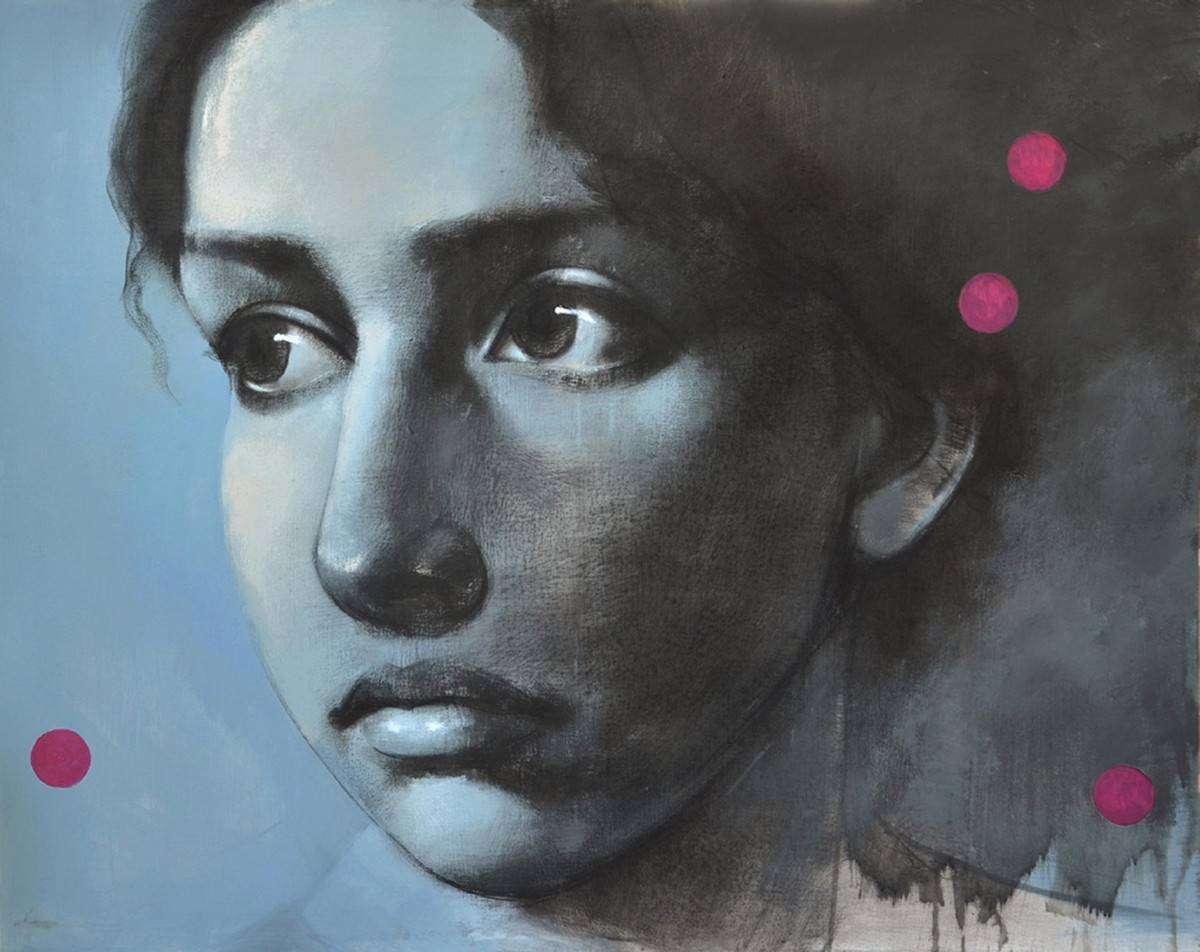Rule no 1: Don’t get scared.
Haha… Just kidding!
But in all seriousness, I’ve seen a lot of people get nervous and dubious when they simply get the idea of painting a portrait. And the first response is – ‘Oh, portrait painting? That’s really hard.’ I agree. Portrait painting is not the easiest form of painting but it is not impossible now, is it?

If you want to try out portrait painting, you must give it a go. And if you still have doubts, worry not, because Mojarto is here to guide you through each step.

Be Sure
The most common medium to paint a portrait is Oil paint on canvas. But though it’s common, it doesn’t mean one can only paint portraits using oil paints. There are so many options to select from – watercolours, acrylics, charcoal etc. Make a decision and pick one for the portrait you’re painting. You never know which one you’re comfortable working with until you try.

Of Lines and Grids
The first step for a beginner is to draw a portrait. Not entirely but at least the outline. It helps you keep the shape of the portrait without straying. One more tip if you want to make it even simpler is to draw a grid. Draw a grid on the photograph you have of the portrait and draw a grid with the same number of lines on your canvas. Then start drawing the outline into the grid. This will ensure that your portrait is the exact shape of your photograph.

Shady Play
If you are planning to make a portrait with skin tones, then it’s best to start with a darker shade of paint and then gradually make it lighter. It gives off the depth-effect and highlights the features in the face. Likewise, it also helps create the much-needed shadow effect in your painting.

Steady Details
Portraits require details even in the hidden features. That’s what makes it unique. So, when you start adding in your details, make sure you give it your full attention and that your hand is steady. Sometimes, after hours of painting a portrait, your hands may start shaking with exhaustion. If that’s the case, then take a break and rest your arms but make sure none of it affects the painting.

Your Portrait is the Star
Your portrait is what you want to display. So, make it the centre of attention by keeping the background subtle. An overly decorated background may clash with your painting and may divert the attention from your portrait itself.
Yet, having said that, if you want to experiment with different backgrounds, why not? Not everything needs to be perfect, so paint away…